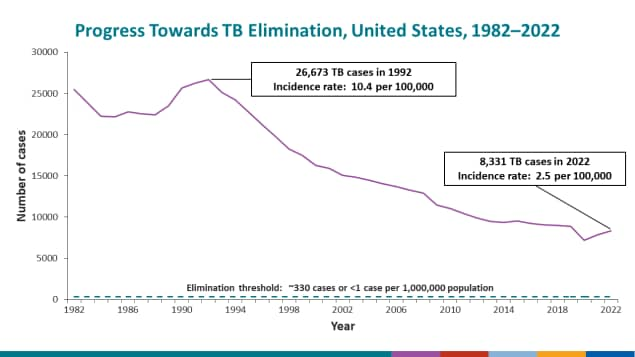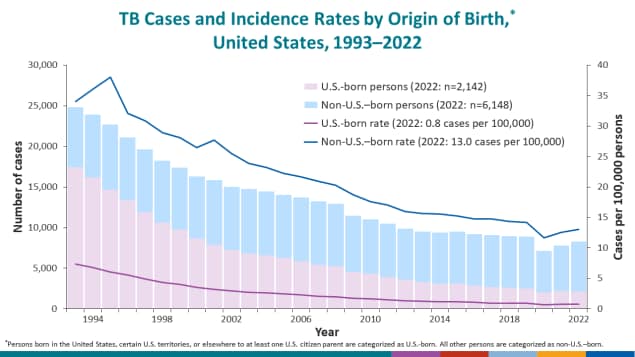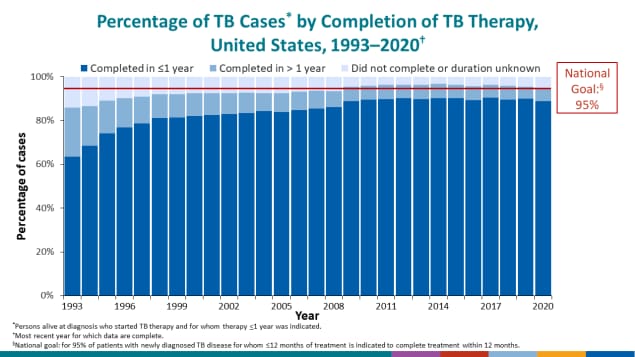"TB incidence appears to be gradually returning to prepandemic levels, but ongoing effects of the pandemic persist.
In 2022, reported TB cases and incidence rates (number of TB cases per 100,000 persons) in the United States increased for the second year in a row, but remained lower than levels reported prior to the COVID-19 pandemic.
Anyone can get TB, but some people are at greater risk of TB than others.
TB disproportionately affects some groups depending on various demographic, health, and social factors.
Birth outside of the United States remains a key risk factor for TB, with a TB incidence rate 17.1 times higher among non-U.S.–born persons compared with U.S.-born persons.
Successful completion of treatment for TB disease is important to cure TB disease, prevent development of drug resistance, and minimize the risk of spread to others.
The national goal is for 95% of patients for whom 12 months or fewer of treatment is indicated complete treatment within 12 months. Although treatment completion rose from 63.4% in 1993 to 89.0% in 2020, the nation is still short of its 95% goal.
Reported Tuberculosis in the United States, 2022 is available exclusively online.
Access detailed information by selecting the categories below, or through the List of Tables. For more information and a summary of the data, visit the Executive Commentary..."
Tuberculosis



